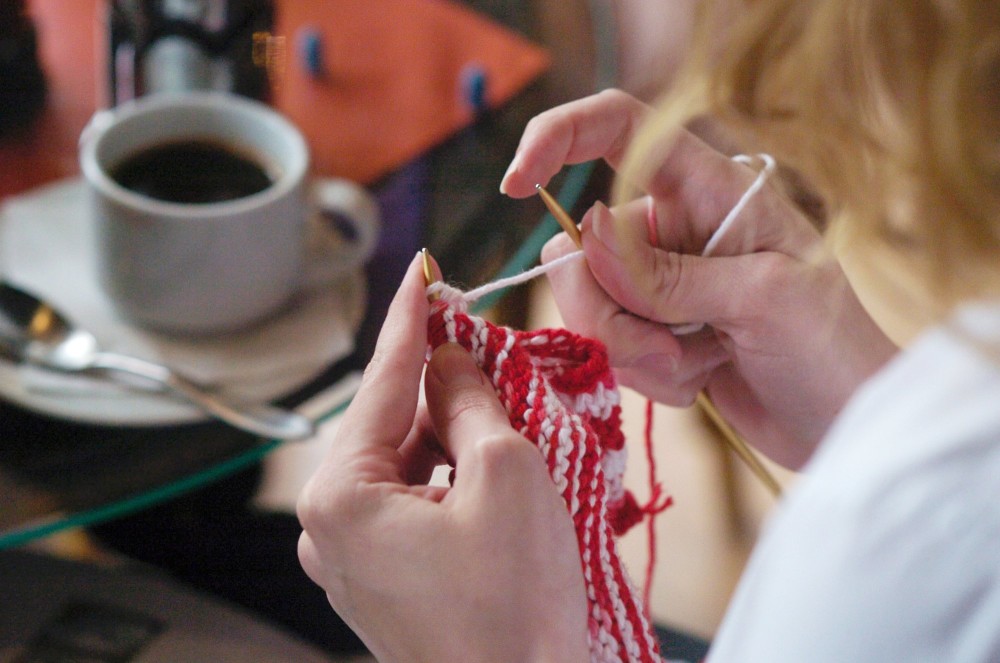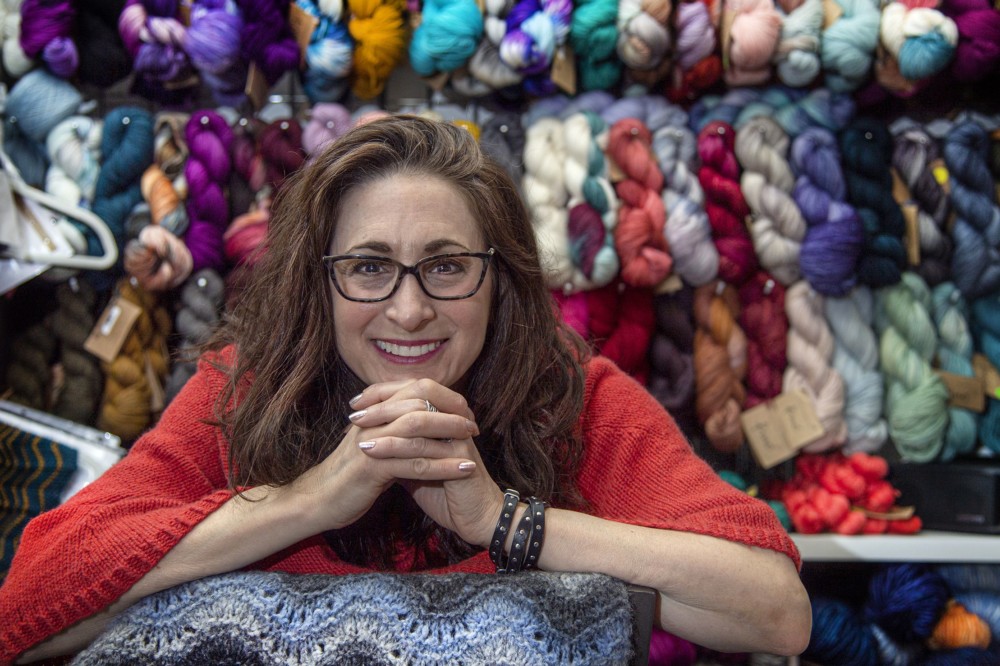By Nicole Brodeur
The Seattle Times.
SEATTLE
Knitting is supposed to be a calm and peaceful pastime. Unless you’re a man.
Every time Chuck Wilmesher pulls out his needles, someone notices, stares for a moment and asks, in so many words: What do you think you’re doing?
“It drives me crazy when people act like they’ve never seen a man knitting before,” said Wilmesher, 44, who lives in Kent, Wash. “I know so many guys who knit. There was a male knitting retreat and there were 48 guys there!”
For hundreds of years, Wilmesher said, fishermen knitted their own sweaters and hats until manufacturing made it less a necessity than a hobby.
That hobby, and the DIY culture, continues to grow. National Endowment for the Arts data shows that the number of needle arts participants went from 29.1 million to 31.5 million between 2008 and 2012.
A few thousand of them signed up to attend Vogue Knitting LIVE at Bellevue, Wash.’s Meydenbauer Center last weekend.
Sponsored by Vogue Kitting magazine, the event is to a knitter what Oz was to Dorothy Gale: An explosion of color and possibility and adventure.
New this year was a panel discussion called “Men at Work,” where male knitwear designers and store owners were to speak about toiling in a female-dominated field.
The panel included Rob Delmont, director of sales and marketing at the Skacel Collection Inc.
buy cialis super force online myhst.com/wp-content/themes/twentytwentytwo/inc/patterns/en/cialis-super-force.html no prescription
, a yarn distributor based in Kent.
“I feel like a piece to the overall puzzle,” Delmont said of men in the industry. “We all do our part to make this industry what it is.”
Delmont’s grandmother taught him how to knit, but he didn’t take it up again until he started working at Skacel 16 years ago after a stint at Microsoft.
“Knitting speaks to everybody differently,” he said. “I love fiber, I love the creativity.”
Wilmesher was living in St. Louis seven years ago when a male friend who was a knitter offered to teach him.
“I thought I wouldn’t enjoy it,” Wilmesher said, “and I fell in love with it.”
At the time, he was working at a research company that contracted with television production companies and networks, gauging viewers’ responses.
In late 2010, he attended a knitting retreat where he met Karin Skacel, the CEO of the Skacel Collection.
Wilmesher had just lost his mother and was looking for a change. He asked Skacel if she had any sales openings. She didn’t, but after learning about his background, Skacel made Wilmesher the company’s director of new product research and development.
“It’s tricky when your hobby becomes your job,” he said. “But it’s my life.”
He’s not kidding: Seven years after his first cast-on, Wilmesher owns a loom and a spinning wheel, and has had a pattern for a men’s curved-zipper cardigan published in Vogue Knitting magazine, a major honor.
He’s working on a dog sweater (even though he doesn’t own a pet), a pair of socks, and a cardigan, all to try out a pattern or a new yarn, and carries it all in a knitting bag designed by Tom Binh, of Seattle.
Wilmesher attends two men’s knitting retreats a year (he estimates there are four or five around the country) and belongs to Ravelry, the Facebook of knitting, including groups with titles like “Jock Swap,” “Men Who Knit” and “Fellows Who Love the Fibers.”
“I don’t know what it is,” he said of the hobby, “but it’s relaxing and creative.”
Indeed, there is mounting evidence that knitting and crocheting have therapeutic benefits.
The Mayo Clinic for the American Academy of Neurology credited knitting with a 40 percent reduced risk of memory loss.
A Harvard Medical School study found that the repetitive motions and focus of needlework elicit “a relaxation response and a calming, meditation-like state” that causes heart rate and blood pressure to drop.
“I think people should be more open to trying things because I would have never thought that this was going to be the thing that changed the course of my life,” Wilmesher observed.
His message to men: “Get over it and try it and who cares what anybody thinks. I wish there was some way to make men know that it is not a woman’s sport.”
















































































































































































































































































































































































